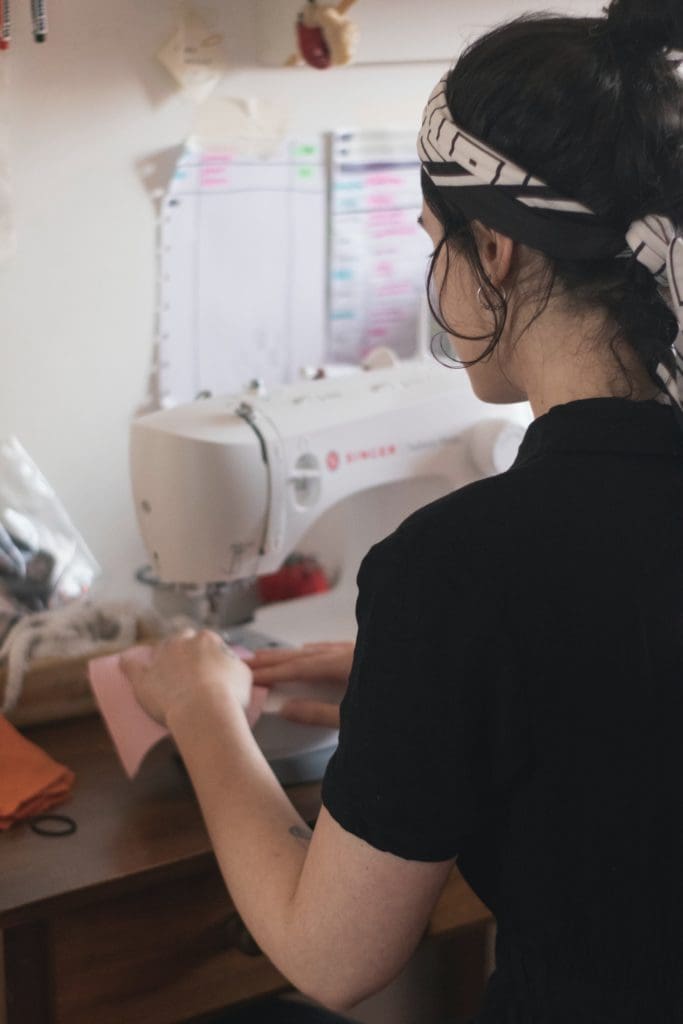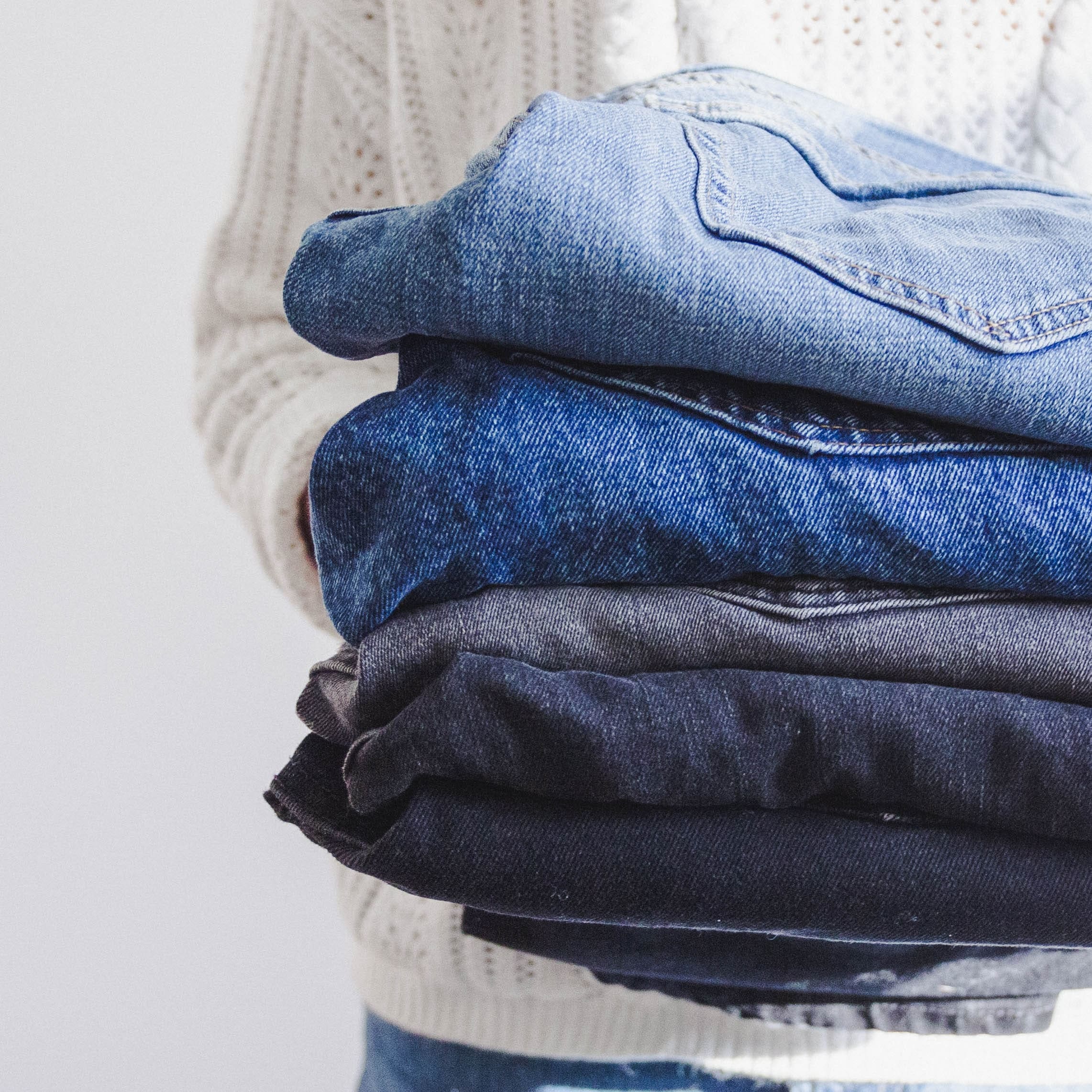A very big contributor to our global, heaping, landfill crisis is clothing—usually, cheap fast fashion that has been worn less than seven times and is now considered garbage by the purchaser. So the best thing to do with your unloved clothing once you no longer want or need that items is to donate it. Right? Well, not really. Read on to find out why.

There are many reasons we donate or dispose of our clothing. Some of these reasons include:
- They may no longer fit but are still in good condition.
- We no longer like the style.
- We have too many clothes.
- Made a buying mistake.
- We want to buy some new things but have a one-in-one-out rule.
- Our kids have outgrown the clothes.
- The item is in need of repair (needs a new zipper, button needs to be sewn, or hole needs to be stitched up) but we don’t have the skills to do it ourselves or don’t want to pay to get it fixed.
- The item has been well worn and is no longer wearable, not sure how to dispose of it, so it gets donated or thrown in the trash.
I’m pretty sure I could check all those boxes as having been my reason for getting rid of a garment. Let’s talk about how clothing donations work, and how they are processed. Let’s use a poly/cotton blend sweater as our example. That sweater of yours gets dropped off at the donation location of your choice. The sweater will be assessed and if seen as resealable and in fair enough condition will be tagged, hung, and put into a vast inventory of other poly/cotton blend sweaters. That sweater will be given a short time period to be sold. It is estimated that only about 10% of donated items are sold, while the remaining items are packed up and shipped off to Global South communities. (That sweater will not be wanted there either.) So that sweater you now innocently donated with the hopes of someone else getting to wear it, will now, most likely, end up in a landfill in another country. We share a planet, so shipping our unwanted textiles to another country is still our problem.
So what do we do about all these clothes we no longer want? There are many steps we can all take to reduce our textile waste. These include:
- Slow down our buying practices! This has to be one of the biggest things we can all do. We don’t need an entire new wardrobe every season.
- Ask yourself why you’re getting rid of something. Is it the fit? The size? Do you not like it? Does it need repair? Does it need an alteration, tailoring, or dry-cleaning? If it’s perfectly fine and you just want something new, perhaps think about keeping that item, but packing it away for a year. It might be all shiny and new looking to you a year from now.
- Is this a garment you could resell? I list my no longer serving me items on Poshmark. It can take a while to sell pieces, but that is all a part of slow fashion. I have also done closet sales on my Instagram page and often give clothes to friends and family who want them. Finding a garment a new home yourself is always best practice.
- When you do buy something, look for those natural fabrics first. Try to avoid synthetics. I buy natural fabrics for my new items I purchase (sometimes with some lycra in there), and then occasionally will purchase some synthetics secondhand. I prefer the feel of natural fabrics anyway, so they are where I gravitate. Natural fabrics will actually breakdown back into the Earth, while synthetics, like polyester, will be here for hundreds of years.
- Is there a local consignment shop who could sell this item for you? I have sold many pieces through consignment over the years. A quick Google search will help you find what’s closest to you. For kids clothing, I highly recommend Once Upon A Child. They have locations in Canada and the U.S. This is also a great place to shop for secondhand clothes for your kids.
- Do you have a friend or friends who would be into doing a clothing swap? I did one with a friend quite a few years ago and it was great! Just add wine and food and it’s a perfect get together with friends.
- Could the garment be dyed? If you have a dingy white top or something with stains on it, this is a fantastic way to extend the life of a garment and give you something new in your wardrobe.
After all of this, once I have exhausted all other options, I will donate items in good condition. If there are some items that won’t work being relocated by any of these means (ie: bras/underwear that is old and falling apart, badly stained items, clothing that is threadbare) what do you do with them? I have a bag with textile waste items. Items beyond repair that no one else is going to want, (Including the thrift shops, so don’t donate them.), I will take to one of the many textile Return-It locations. They will take clothing including shirts, dresses, shorts, jeans, undershirts, as well as baby and children’s clothes, footwear including shoes, boots, gym shoes, and slippers; household textiles including sheets, towels, curtains as well as drapes, blankets and table linens; bags, accessories, and even sleeping bags. These Return-It Centres are a better option than fast fashion brands that offer “textile recycling” programs. These are mostly just a greenwashing campaign designed to encourage us to shop more, as they usually give a coupon for you to spend and buy more. It’s also been proven that the majority of the clothes they receive are either taken straight to landfill or shipped to the Global South, with less than 1 per cent actually being recycled and mede into new textiles.
We all need to think about a garments end of life. Once you acquire a piece of clothing, whether it’s a fast fashion item, a sustainable brand item, a secondhand find, a gift, or something vintage, we are taking on the responsibility of extending the life of that garment as well as making the most responsible choice of what to do with that garment, when it no longer serves us. The next time, before you buy something, ask yourself, “Am I willing to care of this garment and find a sustainable solution for it when I no longer need/want it?” —Jen Pistor

Be the first to comment